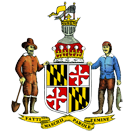| Note on Riparian Rights, ownership, jurisdiction, the meaning of 'navigable' in 1785, and how the framers of the compact of 1785 understood their work. The issue is the commonly understood usage of the word 'navigable'.
[The biggest problem in this whole case, as is the case of much of history, is proving that people are silent on a particular issue or definition simply because everyone at the time knows what it means so that explaining what is meant is not necessary. In my opinion, everyone at Mt. Vernon in 1785, Washington included, knew that the compact was intended for and designed only for administering jointly certain explcitly outlined issues related to the then navigable portions of the Potomac River (from ca. Georgetown to the the mouth) and that, Maryland and Virginia, having just resolved how they would handle the improvement of navigation above Tidewater through the establishment of a partially publicly funded, private corporation. It never entered into their minds that the Compact they would shortly negotiate and sign would ever apply to any portion of the river that they had just recently entrusted to the care of a corporation, including what ultimately was drafted as article 7. The wharves and other improvements mentioned there were focused on activities downstream from the falls in waters that in 1785 were navigable, not what might happen above the fall line at some future date. It is important to point out that both the Potomac Company charter and the navigation issues of the Bay and the Potomac below falls were considered and strategies ironed out for accomplishing each separately in the SAME LEGISLATIVE SESSION. After passing the legislation to deal with the Potomac above the falls, the Maryland Legislature turned to the second problem, navigation and fishing on the bay and its NAVIGABLE tributaries that bordered on Virginia:
Wednesday, 19 January 1785, the House and Senate elect commissioners and deliver instructions to them.
"Resolved, that Thomas Johnson, Thomas Stone, Samuel Chase, and Daniel of St. Thomas Jenifer, Esquires, be commissioners for this state to meet the
commissioners appointed by the commonwealth of Virginia, for the purpose of settling the navigation of, and the jurisdiction over, that part of the bay of Chesapeake
which lies within the limits of Virginia, and over the rivers Patowmack and Pocomoke; and that the said commissioners, or any two of them, have full power, in
behalf of this state, to adjust and settle the jurisdiction to be exercised by the said states respectively, over the said waters and the navigation of the same, their
proceedings to be laid before the general assembly of this state, and to be ratified or dissented to by the assembly; and that the said commissioners be directed to
govern themselves in the execution of the trust reposed to them..." ecp 4/24/01]
|
